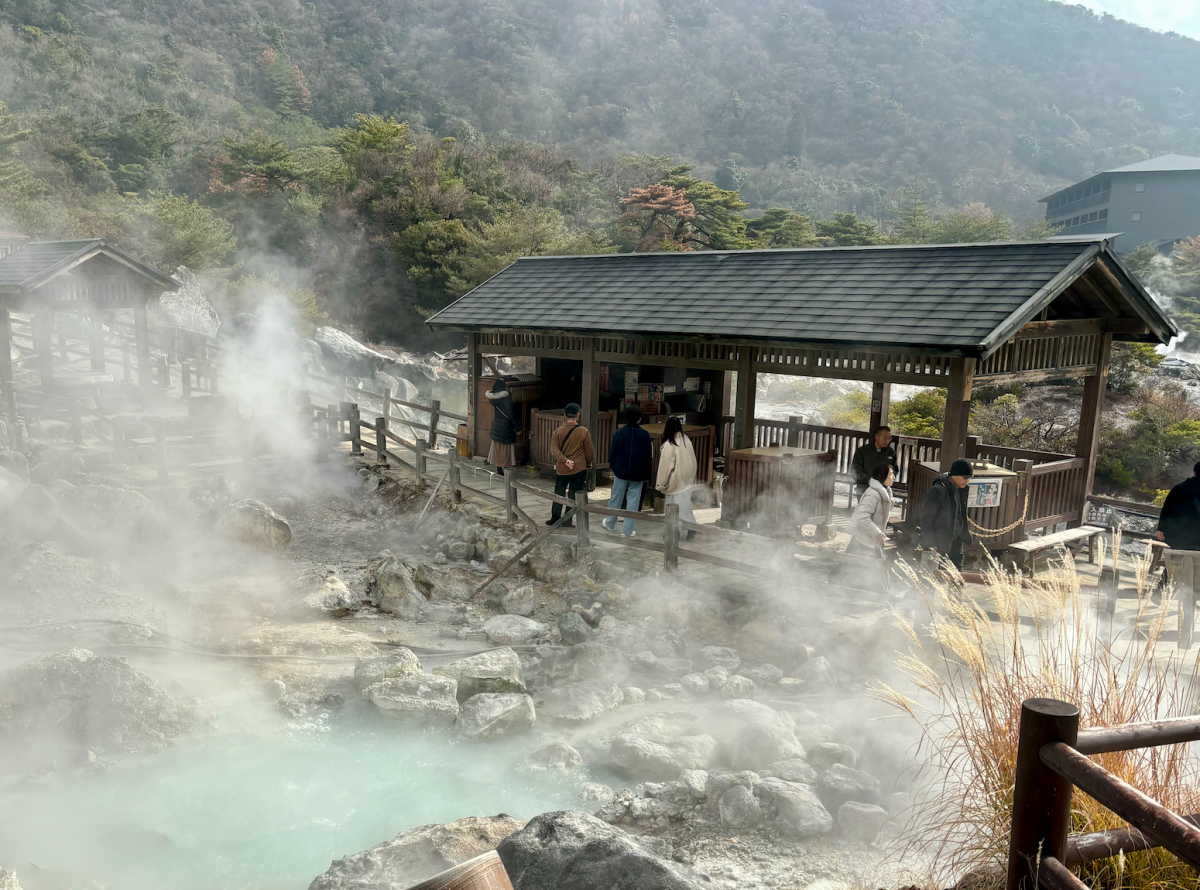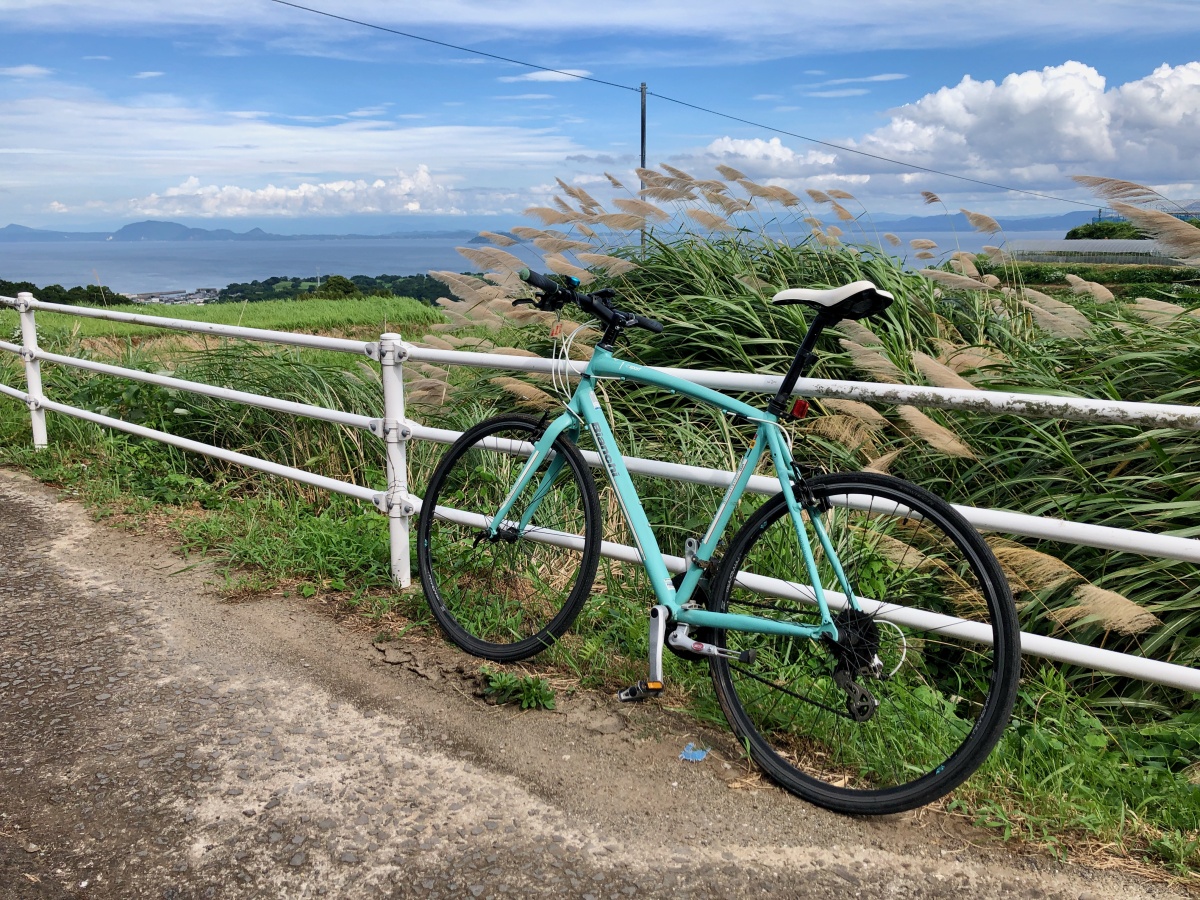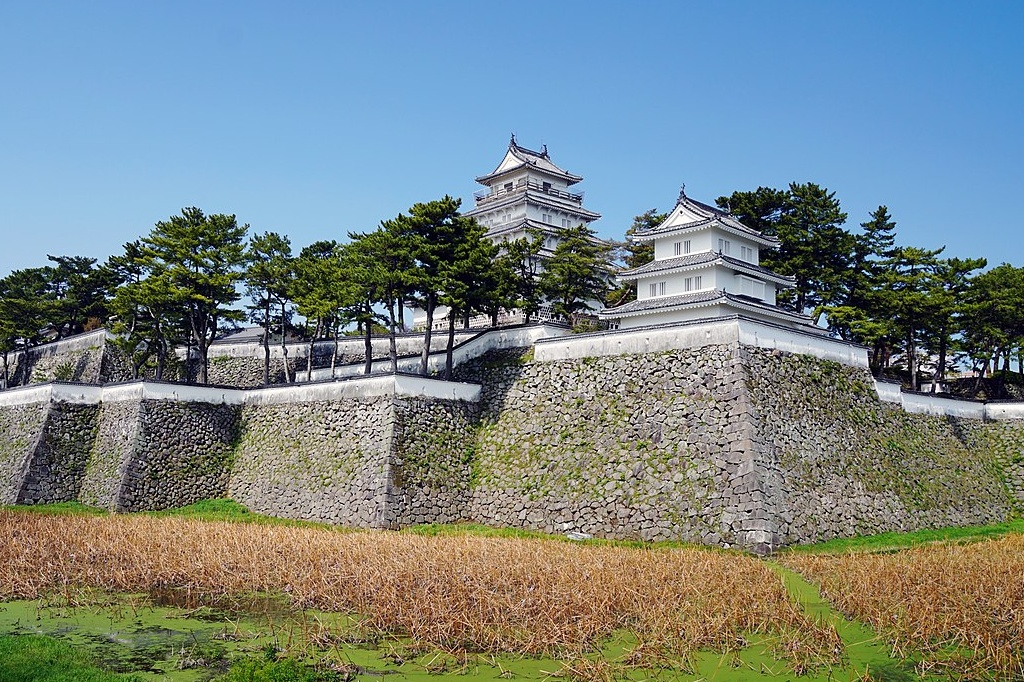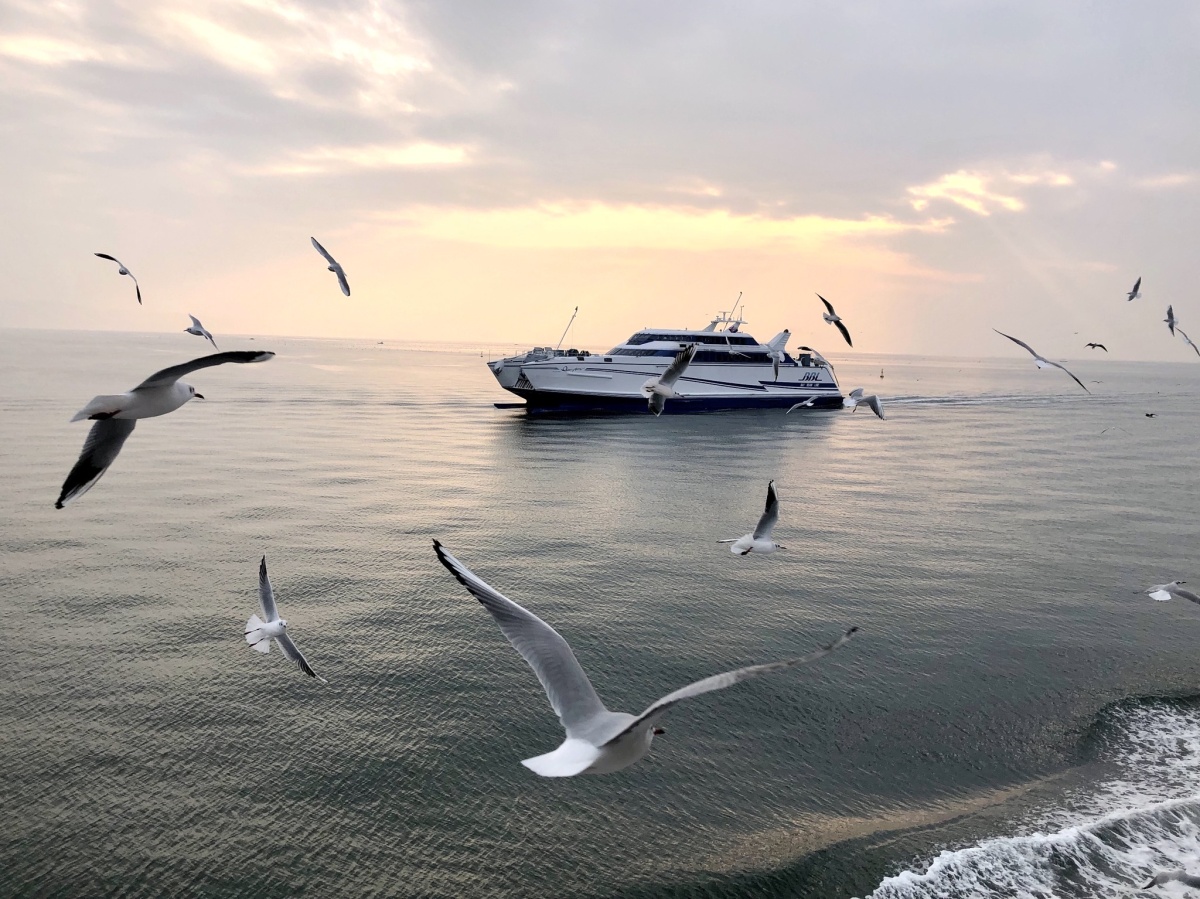Volcanic Playground: Exploring Kyushu’s Fiery Shimabara Peninsula

While Mt. Fuji is perhaps Japan’s most iconic symbol, volcanoes don’t get much attention in travel literature about the archipelago. This is surprising as Japan has the second-highest number of volcanoes, including active ones, of any country (the U.S. has the most). Tim Hornyak visits Nagasaki's fascinating Shimabara Peninsula.

A marker at the summit of Fugen-dake, with Mt. Unzen's newest peak, Heisei-Shinzan, in the distance. (photo: Tim Hornyak)
Japan’s volcanoes are majestic and sometimes deadly, and they shape the local environment and the lives of people living around them. This is particularly true on Kyushu’s Shimbara Peninsula, a little-touristed corner of Nagasaki Prefecture that boasts spectacular hikes, cycling routes, beaches and hot springs.
Surrounded by the East China and Ariake seas, Shimabara is dominated by Mt. Unzen, a group of stratovolcanoes that is still active—and growing. At 1,483 meters, its tallest and newest peak is Heisei-Shinzan. While it was forming in 1991, a violent pyroclastic flow eruption resulted in the deaths of 43 scientists and journalists who were documenting volcanic activity. But Mt. Unzen has an even more terrifying past. In 1792, part of Mt. Unzen’s flank collapsed into the Ariake Sea, generating a tsunami with 100-meter waves that killed approximately 15,000 people in Japan’s worst volcanic disaster.
In recent years, Mt. Unzen has been quiet, and makes a rewarding destination for hiking and relaxation, not to mention spectacular views. Fugen-dake (1,359 meters) can be summited via paths of moderate difficulty. To save some time on the ascent, take a car or bus to Nita Toge pass, where the Unzen Ropeway cable car lifts passengers to 1,300 meters elevation. Late May is one of the best times to visit because of the thousands of azaleas in bloom around the pass. Another interesting feature of the mountain is its lava caves. Displays near the cave entrances describe how they have been used to store silkworm eggs, ice and seismographic equipment to monitor Mt. Unzen.

Visitors try eggs boiled in hot springs at Mt. Unzen's geothermal "hells." (photo: Tim Hornyak)
From the summit of Fugen-dake, you can view the surrounding Ariake Sea, the Amakusa archipelago and the puffing peak of Heisei-Shinzan, which remains off-limits due to volcanic activity. It’s all part of Unzen-Amakusa National Park, one of Japan’s oldest national parks.
On the way down, don’t forget to try one of Shimabara’s other delights—hot springs. Unzen’s famous bubbling geothermal vents, known as “hells,” generate hot springs that have long been soothing travelers for centuries. The resort became internationally famous in the early 20th century, drawing such celebrities as Helen Keller and Chiang Kai-Shek. Visitors can walk paths meandering through the steaming pits for free—you’ll find stray cats warming themselves on the rocks, vendors selling onsen tamago (eggs boiled in hot springs) and memorials including a cross dedicated to the memory of Christians tortured here by samurai in the 17th century. The many nearby resort hotels offer immersive bathing for day trippers; there’s also a free foot bath across the road by the Mt. Unzen Visitor Center.

The Shimabara Peninsula offers seaside cycling on a combination of existing roads and a repurposed railroad. (photo: Tim Hornyak)
About 13 km to the west down National Route 57, you’ll find Shimabara’s other great hot springs resort, Obama. This quiet seaside town boasts Japan’s longest foot bath at 105 meters, and beside it are mushigama, stone steamers you can use to steam your own food. Nearby are hot springs inns with baths open to day trippers, nostalgic backstreet cafes, and eateries offering regional cuisine such as Nagasaki champon, a hearty noodle soup of fried pork, seafood and vegetables. Being on Tachibana Bay, Obama is a good jumping-off point for exploring coastal Shimabara. Aside from car and bus, one of the best ways to get around is bicycle. The three cities that make up the peninsula, Unzen, Shimabara and Minamishimabara, have been building a 106-km cycling circuit that uses existing roads as well as defunct sections of the Shimabara Railway Line, which currently extends from Isahaya to Shimabara Port.

Housed in an 1899 customs house, the annex of the Kuchinotsu Museum of History and Folklore has exhibits on local history and figures like Nagano Manzo, Japan's first emigrant to Canada. (photo: Tim Hornyak)
The coastal route goes through some worthwhile leisure and historical spots. The town of Kutchinotsu on the southern tip of the peninsula has spectacular sunsets at Shirahama Beach, dolphin-watching tours, ferries to Oniike Port in Amakusa, Kumamoto Prefecture, and the Kuchinotsu Museum of History and Folklore. The museum’s annex by the mouth of the harbor is an old customs office from 1899 with displays on the 1579 arrival here of Jesuit missionary Alessandro Valignano, the town’s heyday three centuries later as a coaling port, as well as how it was a departure point for so-called karayuki women who were trafficked overseas. A 15-minute walk to the south will bring you to the squat Kuchinotsu Lighthouse dating to 1880; it provides an eye-popping view of the Hayasaki Strait and the Amakusa Islands.

Shimabara Castle has original stone walls and a museum dedicated to Minamishimabara-born sculptor Seibo Kitamura (photo: 663highland)
On the peninsula’s east coast facing the Ariake Sea, several sites commemorate the 1991 eruption of Mt. Unzen, including the Onokoba Mudslide Prevention Museum, a former elementary school that was abandoned after the disaster, and the Mt. Unzen Disaster Museum, a science center with exhibits on the eruption (including a charred video camera) and a large play area for children.
Five kilometers to the north is the placid center of Shimabara City, a former samurai stronghold. It has a small but well preserved samurai residential quarter (Shimabara Bukeyashiki), and the reconstructed Shimabara Castle with stone walls dating to the early Edo period (1603–1867) and sculptures by Seibo Kitamura (1884–1987), known for the 10-meter-tall Peace Statue commemorating the 1945 U.S. atomic bombing of Nagasaki. South of the castle, Shimeiso is a beautiful villa from the early 20th century that stands on a carp-filled spring water pool; the surrounding lanes and Seiryutei Tourist Information Center also feature waterways with colorful carp.
Getting There

Ariake Sea ferries connect Shimabara and Kumamoto ports in about one hour. (photo: Tim Hornyak)
Shimabara City is also handy for travel connections. Trains depart for Isahaya from Shimabara Station, which was built to resemble the castle, while vehicle ferries connect Shimabara with Kumamoto Port in about an hour. Looking back across the Ariake Sea, you can see Mt. Unzen’s peaks looming over the town, quiet for now but ever threatening.
Apart from ferries, Shimabara City can be reached from Isahaya by rail (1 hour, 12 minutes). Another option is bus (2 hours, 39 minutes) via Obama (56 minutes) and a transfer at Unzen (1 hour, 26 minutes). Flights take about two hours between Tokyo's Haneda Airport to Nagasaki Airport, where buses run to Isahaya (47 minutes). Trains also run to Isahaya from Nagasaki (24 minutes) and Fukuoka's Hakata Station (1 hour, 15 minutes).



